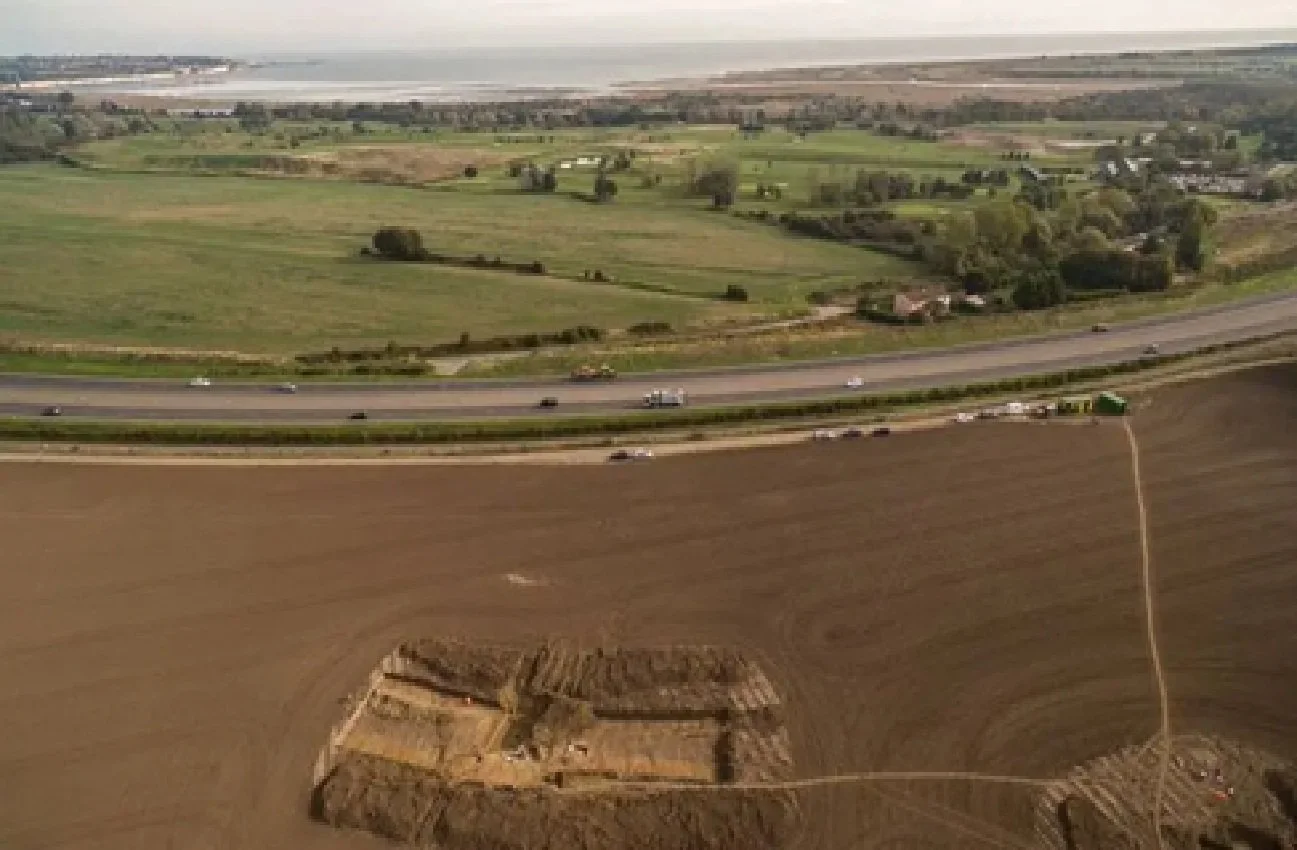significant archaeology wihtin the sea link project
St Augustine’s Landing
St Augustine
St Augustine was the first Archbishop of Canterbury, he landed on the Isle of Thanet in AD 597 accompanied by forty monks and was welcomed by Ethelbert King of Kent.
St Augustine’s Well
St Augustine held his first Baptism in a pond situated at St Augustine’s golf course, which became known as St Augustine’s Well - England’s first holy well.
St, Augustine’s Monument
St. Augustine's Cross in Thanet, Kent, is a Celtic stone cross erected in 1884 to commemorate where St. Augustine first landed in Britain in AD 597, celebrated his first mass, and met King Ethelbert. Located near Ramsgate on Cottington Road at Pegwell Bay, this historic site is a Grade II listed monument recognized by Historic England.
National Grid are proposing to trench through the area (marked in red)
Julius Caesar Fort
In a 2017 episode of the BBC program Digging for Britain, presenter Alice Roberts examined evidence that archaeologists believe points to a fort built by Julius Caesar in Kent, England. The discovery was made by a team from the University of Leicester near the hamlet of Ebbsfleet, which is in Pegwell Bay, Thanet.
Details of the discovery:
• Location: Archaeologists identified the area of Pegwell Bay as a potential landing site, which is consistent with Caesar's own accounts of his 54 BC invasion.
• Defenses: A 5-meter-wide ditch, similar to Roman defenses found in France, was unearthed. This suggests the site was a large fortified camp built to protect Caesar's ships on the beach.
• Artifacts: Other finds at the site included weapons and what was described in the program as an "ancient fort scattered with human skulls and weapons".
• Caesar's invasions: It is important to note that this fort relates to Caesar's invasions in 54 BC, which ultimately ended in retreat. It predates the successful Roman conquest of Britain under Emperor Claudius by nearly a century.
Link to BBC TV program on Digging for Britain - 30 minutes in has the details of the fort.
National grid will be trenching through this location shown in red.
Watch the video on the site discovery

